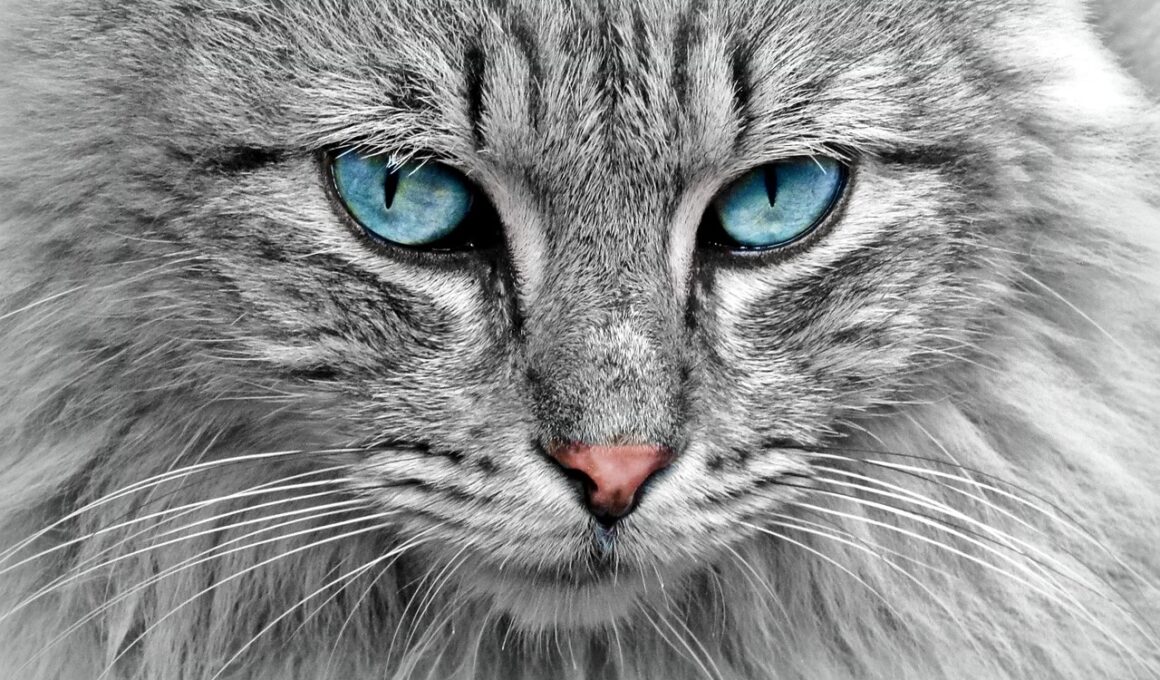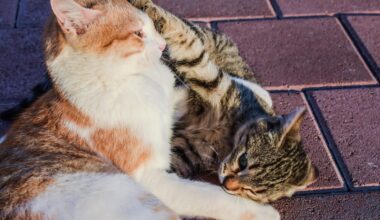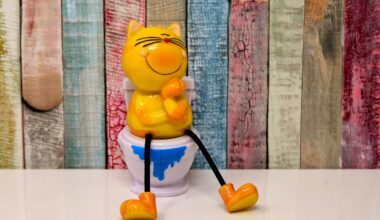The Economics of Cat Show Sponsorships Explained
Understanding the economics of cat show sponsorships offers intriguing insights into the pet industry. Sponsorships provide essential funding for these competitions, allowing organizers to cover costs such as venue rentals, marketing, and awards. Various companies, particularly in the pet care sector, seek to associate themselves with such events to increase brand visibility. By sponsoring cat shows, these businesses can showcase their products to an engaged audience of cat owners and enthusiasts. This targeted advertising strategy can lead to higher sales and customer loyalty. Additionally, cat shows can attract attention from media outlets and social media platforms, further enhancing visibility for sponsors. Over the years, the financial landscape of these sponsorship deals has evolved significantly. Larger corporate sponsors have begun investing more resources as cat shows grow in popularity. This trend has sparked interest among smaller businesses, eager to partake in the lucrative worlds of pet shows. Understanding how to balance sponsorship interests is crucial in creating a win-win scenario that benefits both parties. An increase in sponsorship can likely elevate the quality and scale of cat shows, leading to broader audience engagement. This symbiotic relationship encourages a thriving ecosystem for all involved.
Effective cat show sponsorships often provide a range of benefits for sponsors, making them an appealing marketing strategy. By aligning their brand with positive and enjoyable events, companies can capitalize on the goodwill associated with cat shows. This association not only boosts brand reputation but also fosters customer goodwill, making attendees more likely to purchase their products. Sponsors gain access to unique promotional opportunities at shows. For example, they can display banners, distribute samples, or even stage product demonstrations. Direct engagement with potential consumers strengthens relationships, making them more likely to convert to loyal customers. The pet industry continues to expand, prompting diverse business sectors to recognize potential revenue streams. Innovative sponsorship packages often include tiered options for companies, ranging from basic to premium offerings. These options allow businesses of varying sizes to join the sponsorship landscape. Further, sponsors can benefit from social media promotions and collaborations, extending exposure beyond just the event itself. In conclusion, the economics of cat show sponsorships underline varied revenue opportunities, compelling relationships between sponsors and consumers, and innovative branding strategies. Developing a robust plan for sponsorship engagement can yield significant advantages for both cat shows and their sponsors.
The Competitive Landscape of Cat Show Sponsorships
The competitive landscape for cat show sponsorships is constantly evolving, reflecting broader trends within the pet industry. As more businesses recognize the value of aligning with pet events, competition for sponsorship deals intensifies. Companies range from local pet shops to national brands, each vying for a slice of this lucrative market. To stand out, potential sponsors must develop unique selling propositions that resonate with cat show demographics. Many businesses are shifting towards eco-friendly and ethically sourced products to attract the growing base of environmentally conscious consumers. Understanding audience interests can inform sponsorship strategies and maximize impact. Some sponsors also embrace technology, leveraging social media and influencer partnerships to amplify their reach. Developing partnerships with influential figures in the pet community can enhance brand credibility and drive engagement. Furthermore, building relationships with event organizers can foster long-term sponsorship agreements. Unique marketing campaigns that tie-in directly with cat show events create excitement and draw in crowds, benefiting both parties. In this crowded field, innovative sponsorship approaches can uncover opportunities for enhanced engagement and profitability, driving continued interest in cat shows and supporting sustainable business growth.
When analyzing cat show sponsorships, it is vital to consider the costs involved for sponsors. Initial investment can vary significantly depending on the level of involvement and the type of package chosen. Basic sponsorships may include logo placements and promotional materials, while premium packages often encompass extensive branding and on-site activation. Additional costs may also arise from creating tailored marketing materials for the event. Understanding the balance between these expenses and anticipated returns is essential for making informed decisions. Comprehensive market research into audience demographics, pet ownership trends, and competitors can guide sponsors toward optimizing their strategies. Effectively tracking leads and conversions generated during the show provides valuable metrics for evaluating return on investment. Beyond financial considerations, sponsors should weigh the potential for brand reputation enhancement through philanthropy and community engagement. Supporting local rescue organizations or providing educational resources enhances goodwill, strengthening relationships with cat show attendees. As sponsors and event organizers strategize their collaborations, a transparent approach can align goals and optimize outcomes, encouraging ongoing partnerships. Together, businesses and cat show organizers can enhance brand visibility while elevating the overall event experience through strategic sponsorships.
The Role of Social Media in Cat Show Sponsorships
Social media plays an increasingly influential role in the dynamics of cat show sponsorships. Leveraging platforms such as Instagram and Facebook allows sponsors to enhance their branding efforts and engage with potential customers in meaningful ways. Event organizers often use social media channels to promote the show while featuring sponsors prominently. This collaboration results in heightened visibility, allowing sponsors to craft targeted content that resonates with audiences. By employing strategic campaigns, sponsors can initiate pre- and post-event buzz, ensuring their messaging reaches the right viewers. Hashtags can create online communities around the event, boosting engagement and participation. As attendees share their experiences, the organizers and sponsors benefit from organic reach driven by user-generated content. Sponsorship deals can also incorporate social media-specific objectives and initiatives to maximize promotions beyond traditional marketing channels. Interactive posts, live streaming, and contests can further enhance engagement opportunities. Additionally, using influencers or engaging local pet personalities can help to amplify the message and provide authentic connections. In conclusion, social media serves as a vital tool for sponsors in promoting cat shows, building relationships with the audience and enhancing brand recognition.
The return on investment for cat show sponsorships can vary depending on numerous factors, but the potential benefits are significant. Companies that invest in cat show sponsorships can see both short-term and long-term advantages. Increased visibility during the shows can lead to immediate sales boosts, while ongoing brand recognition can solidify a loyal customer base. Tracking promotional efforts and measuring their impact is crucial for ensuring that sponsorship agreements yield fruitful returns. Many organizations also use insights from previous events to refine strategies for future sponsorships. Regularly reviewing metrics such as social media engagement, website traffic, and direct sales can offer valuable insights. Positive interactions during sponsorship events can create lasting impressions on potential customers, serving to increase brand loyalty. Long-term sponsorship relationships can drive ongoing engagement with the pet-owning community, fostering meaningful brand connections. Effective communication between sponsors and event organizers is essential to align expectations and optimize results. With deeper insights into consumer buying patterns, sponsors can tailor their marketing tactics for even greater effect. Continuous assessment and adaptation can ensure that cat show sponsorships remain lucrative and sustainable, supporting both the event’s growth and the sponsors’ visibility in the pet industry.
Future Trends in Cat Show Sponsorship
As the pet industry evolves, so too do the trends and dynamics influencing cat show sponsorships. Future developments are poised to shape how brands engage with pet enthusiasts. Growing consumer demand for pet wellness products is already prompting brands to align their sponsorship messages with health-conscious themes. Companies promoting high-quality food, supplements, and grooming products will likely participate in these sponsorships to reach relevant audiences effectively. The emergence of virtual cat shows and online competitions expands opportunities for sponsors to innovate their approaches. Integrating virtual elements within shows can increase customer participation while allowing brands to interact in real-time with attendees. Furthermore, the trend toward personalized marketing experiences will likely drive brands to customize their offerings. Engaging storytelling and relatable content can resonate even more deeply with attendees, enhancing the connection between sponsors and consumers. Additionally, initiatives focusing on sustainability will gain more traction. Brands dedicated to environmentally friendly practices are likely to foster greater connections with eco-aware pet owners. As new trends surface, creative sponsorship arrangements could redefine cat shows, enhancing engagement and profitability while supporting brands’ marketing goals.
In summary, cat show sponsorships play a crucial role in the pet industry’s vibrant landscape. They offer unique opportunities for businesses to connect with target audiences and promote their brand effectively. Understanding the economic implications of these sponsorships enables both organizers and partners to maximize their potential. By examining current trends and future opportunities in cat show sponsorships, businesses can adapt their strategies to thrive in an ever-competitive market. Collaborating with event organizers becomes essential in shaping effective sponsorship deals while allowing for innovation and creativity. Social media amplifies sponsors’ messages and empowers brands to create engaging narratives that resonate with audiences. Although the costs and benefits of sponsorships vary, calculating potential return on investment remains vital for long-term success. Learning from past experiences will help refine future approaches in the session-driven pet show landscape. Continuing to cultivate relationships and engagement with consumers will solidify a strong foothold for various brands in the pet industry. With constant evolution and growth on the horizon, cat show sponsorships are positioned to remain a fruitful endeavor for partners and organizers alike. Ultimately, the mutual benefits will strengthen the cat show community, providing enriching experiences for cats and owners.


